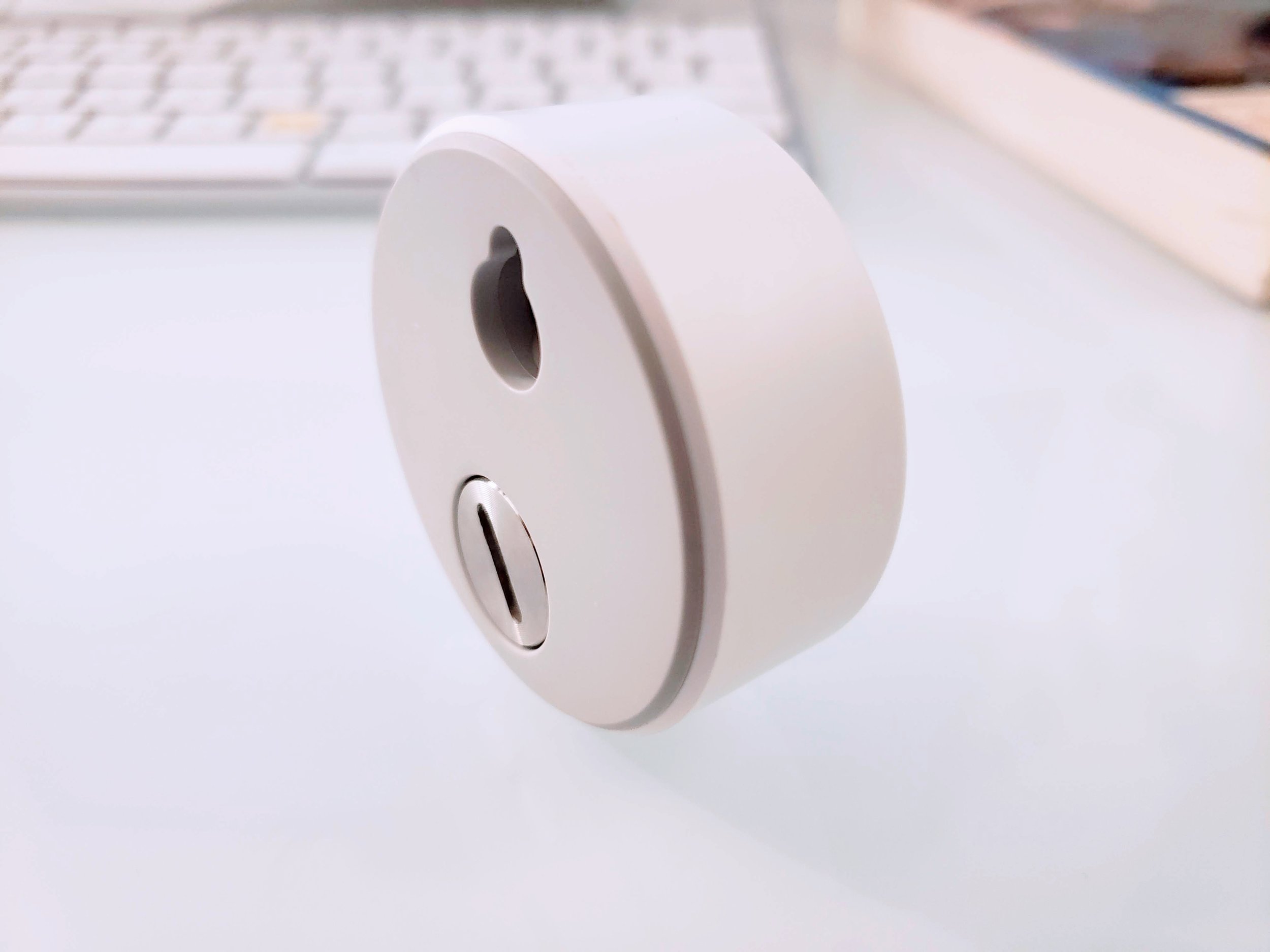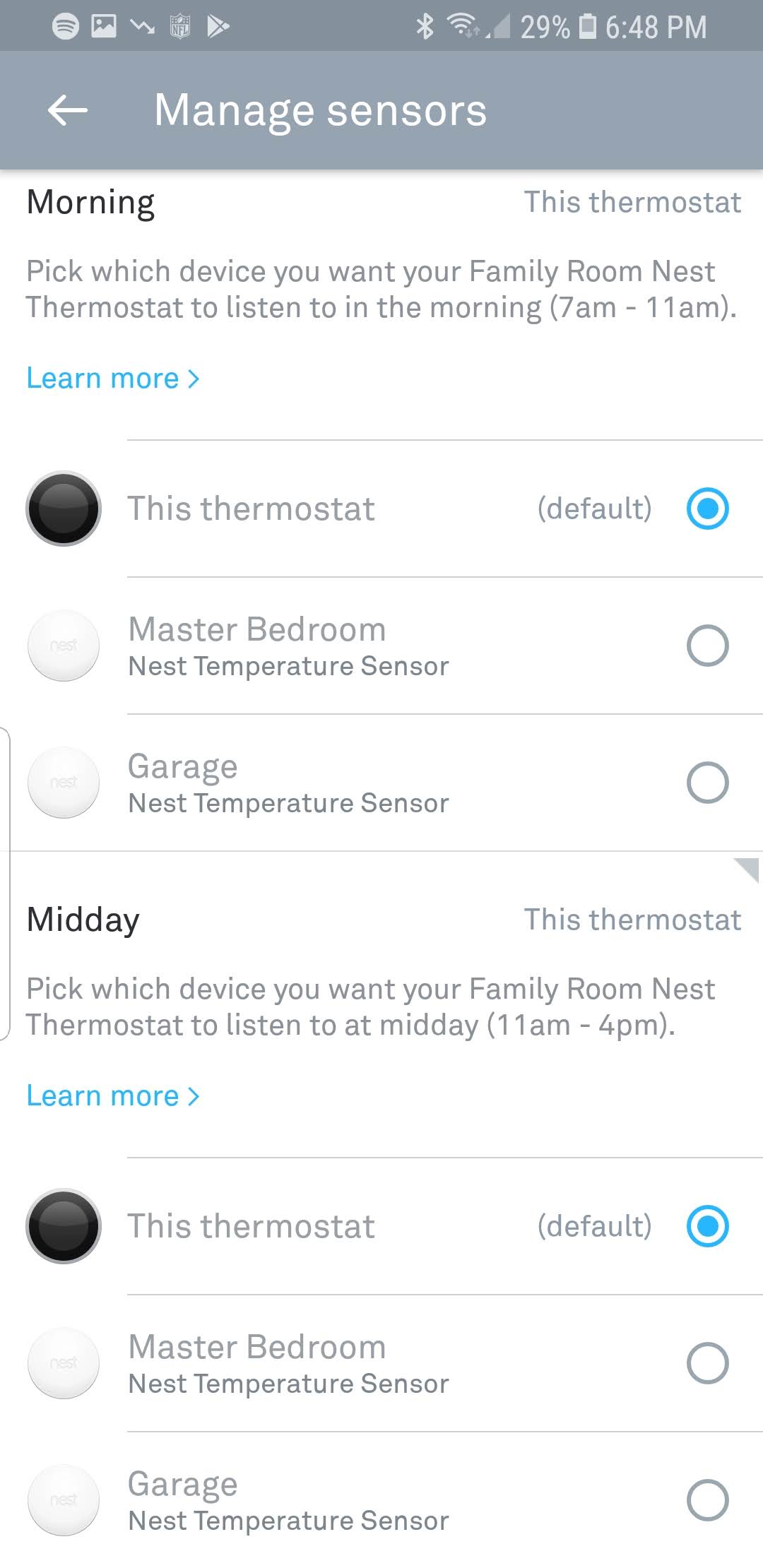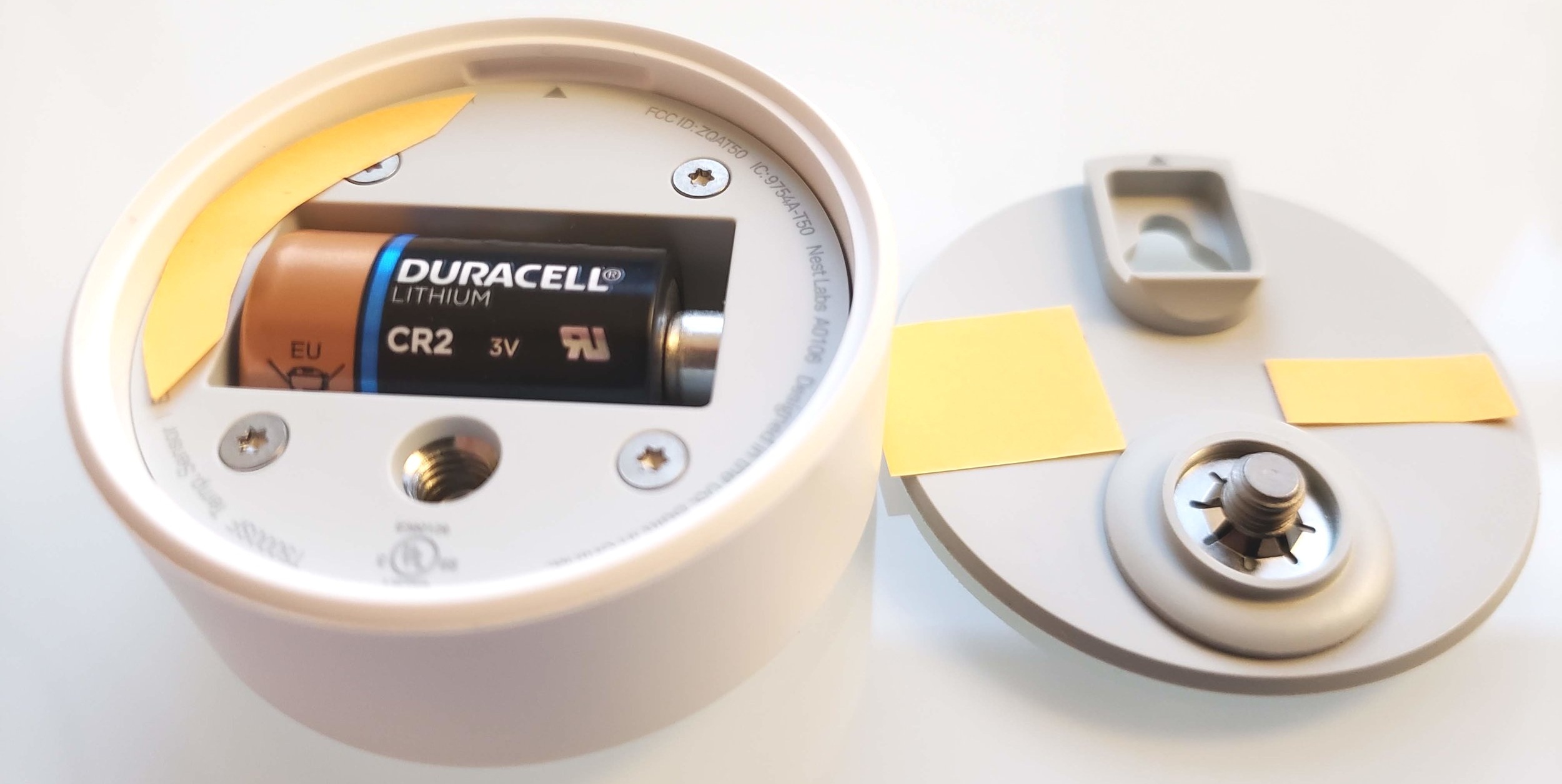Nest Thermostat Temperature Sensor Review
/I’ve had the nest thermostat temperature sensor for installed in my home for several months now and can report back that it’s been a great investment to help regulate the comfort of my home.
The nest thermostat temperature sensors launched in 2018 and work with both the nest thermostat generation 3 & the nest E thermostat. If you have an older generation 1 or 2 nest thermostat the nest temperature sensors will not work with your older nest thermostat, but they do work with all of the nest thermostats currently on the market.
What Is The Nest Thermostat Temperature Sensor?
The nest thermostat temperature sensor directly connects to your nest thermostat via nest’s special wifi network included in the nest and reports the temperature remotely wherever you place it. So if your nest thermostat is in your living room you could locate your nest temperature sensor in your bedroom to see how different the temperatures are in different parts of your house, condo or apartment.
What’s even better than it’s remote temperature sensing capability is that you can set your thermostat to maintain the temperature you choose at the location where the nest thermostat temperature sensor is located, giving you exact control of the temperature of any room in your house.
So if you place a nest thermostat temperature sensor in your bedroom, you could set your nest thermostat to maintain 70 degrees in your bedroom, rather than 70 degrees in your living room. No house has uniform heating and cooling and the nest thermostat temperature sensor helps to solve this problem to optimize your comfort.
Nest Temperature Sensor Review: Nest Temperature Sensor Front View
The nest temperature sensor information shows up underneath the nest thermostat information. You can toggle between rooms you would like to control the temperature in.
Nest Thermostat Thermostat Sensor: Best Uses
We live in a multi-floor house and every year when we change from heating to cooling or cooling to heating I adjust the floor vents and dampers in my house to make the heating system more efficient and the house more comfortable.
Heat rises so in winter I turn down some of the vent’s upstairs because the heated air ends up making its way to the upstairs which is typically hotter than the floors below.
In the summer I open up the vents in the upstairs and close some of the downstairs vents because cold air sinks, and this seems to help balance out the heating, cooling and comfort in my home. When I do it I typically also replace my air filters to keep the furnace running smoothly and increase its lifespan. It takes less than 10 minutes for me to do the entire home but makes a huge difference in comfort and energy efficiency
I used to continually adjust the vents in my house throughout year, but with the nest temperature sensors I have been able to find the parts of my house that heat and cool differently and it has allowed me to more precisely dial in my heating and cooling system by opening and closing vents to get the home as close to a uniform temperature as possible.
My favorite part of using the nest temperature sensors is using them to set the exact temperature in our master bedroom that I know I will be comfortable at. I typically sleep hot, and with our thermostat located downstairs before we had the nest thermostat temperature sensors installed I would wake up typically to hot and rarely to cold. In the summer the master bedroom upstairs would be quite a bit hotter because it’s directly under the roof where as the living room is on the floor below meaning the AC wouldn’t kick on until the temperature was raised in the living room at which point it would feel like our master bedroom was sweltering. Now when I sleep I can set the temperature to an exact temperature in our master bedroom and it will stay there all night. It has greatly improved my comfort and quality of sleep since having the nest temperature sensor installed.
I also have a nest thermostat temperature sensor placed in our garage because I have hose connection in the garage and during the winter want to monitor it to make sure that it doesn’t freeze. You could use the nest temperature sensor to monitor the indoor temperature in a basement or where exterior wall plumbing is located to prevent your pipes from freezing. I have heard of people placing them under kitchen sinks in older houses with less insulation so they can monitor the temperatures to prevent pipe from bursting during extended cold spells.
On the converse you could also use a nest temperature sensor in your attic to monitor the temperature of your attic during the summer, and when to turn on an attic ventilation system if your house is equipped with one.
Nest Thermostat Temperature Sensor Review: Back view of Nest Temperature Sensor with wall hanging mount and battery access.
Nest Thermostat Temperature Sensor Review: Features & Details
The nest thermostat temperature sensor is a is a round white puck about 2 inches in diameter and just over 3/4 of an inch thick. The temperature sensor runs on one duracell lithium CR2 battery that will last up to two years. The nest temperature sensor can be discreetly mounted on the wall with the provided screw or placed anywhere you want without a screw. I have one of mine sitting behind one of our sonos speakers and you can’t see the small profile of the nest temperature sensor behind the speaker.
Beyond detecting temperature and allowing you to control the temperature in a room where the nest temperature sensor is placed it will also let you set schedules for specific temperature sensors in specific rooms so you can control the temperature in the rooms you are using the most in your house.
In the screenshot below from the nest app is an example of the temperature sensor scheduling screen. You can pick different sensors that you would like to be used control the temperature in your house throughout the day. For our house I use the sensor schedule to control the temperature in our master bedroom in the evening and at night before going to bed.
The nest thermostat temperature sne
Nest Thermostat Temperature Sensor Review: What You Should Know
The nest thermostat temperature sensors will tell you the temperature wherever you place it and allow you to set that room to a particular temperature, but it can’t change the differences in how your house heats and cools. If your house was designed with too many vents or too few vents in a particular room, or with not enough insulation the nest thermostat temperature sensors can’t solve that physical problem for you.
But the nest thermostat temperature sensors can help heat and cool the parts of your house you are using to a more comfortable and consistent temperature. So if your living room, where your nest thermostat is located is typically 5 degrees cooler than your master bedroom, using a nest temperature sensor you could heat and cool your master bedroom to the exact temperature you are comfortable with before going to bed rather than relying on the living room temperature reported by your nest thermostat to determine what temperature your master bedroom is.
What can you do for uneven heating and cooling of your house?
The nest temperature sensor can help as we’ve describe above but you can also do the following to help make the heating and cooling of your house more uniform.
Adjust the vents in each room in your house, to properly control the airflow.
Adjust the dampers located on the ductwork, to control the airflow. Ductwork dampers are typically located near your furnace or in your basement in an accessible location. On the side of the ductwork they typically look like small metal lever that you can adjust to either open or closed.
You can add a smart vent like the Keen System, or a temperature controlled booster fan to better regulate the temperature throughout your home.
Most people will find that the addition of nest temperature sensors, with some hand tweaking of your vents will help better regulate the temperature in your home.
Nest Thermostat Temperature Sensor Review: What’s inside the Nest Temperature sensor? You can replace the battery by taking off the back cover, the device QR codes for scanning are also located on the back cover if you ever need to re-add your Nest Temperature Sensor to your network. The QR codes and device specific information are covered in Yellow.
Nest Thermostat Temperature Sensor Review: FAQ
Does the nest thermostat temperature sensor detect humidity?
No, the nest thermostat temperature sensor does not detect humidity, it only detects temperature.
Can you use the nest thermostat temperature sensor outside?
No, it is not intended for outdoor use but you could place it in a garage or basement.
Do I need to plug in the nest thermostat temperature sensor?
No, the nest thermostat temperature sensor is battery powered.
How long do the batteries last on the nest hello temperature sensor?
The nest website states that the batteries will last up to 2 years.
Nest Temperature Sensor Battery Replacement: Duracell Lithium CR2 Battery































